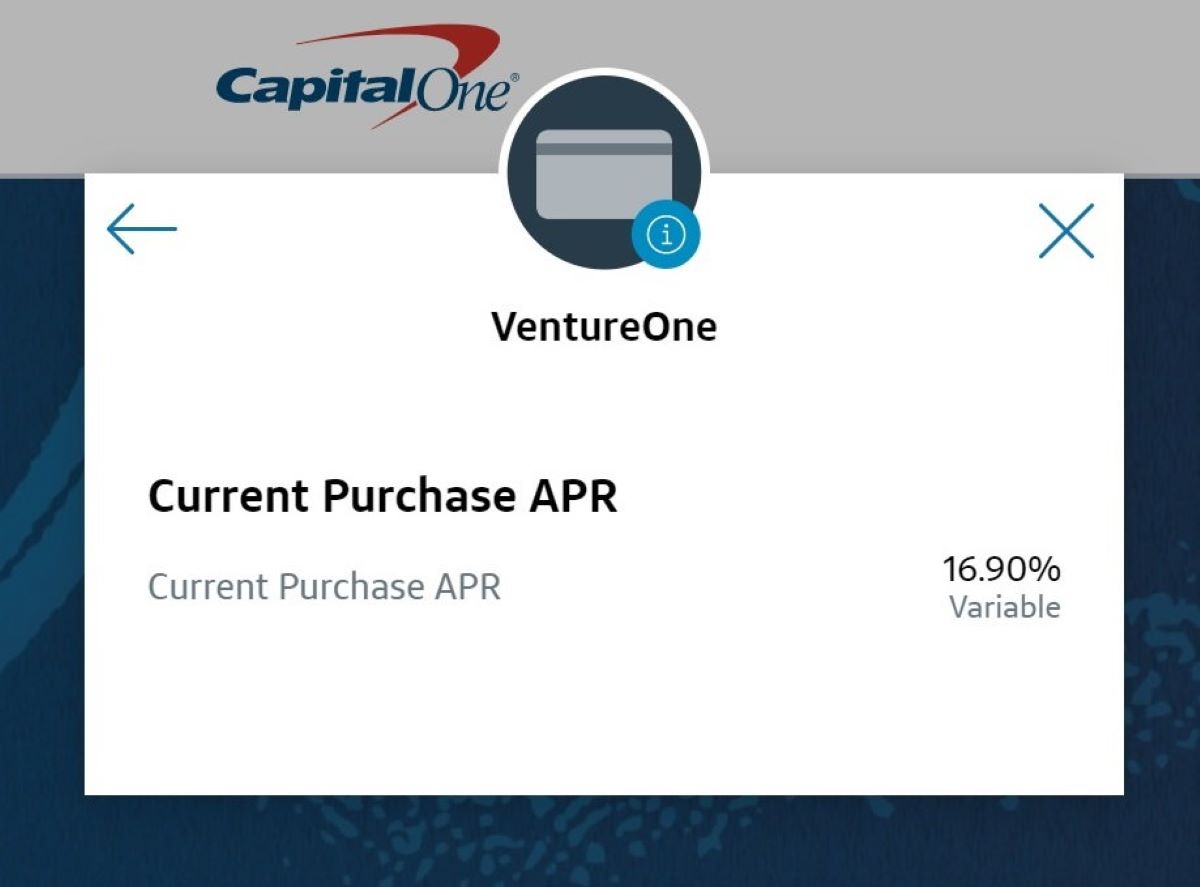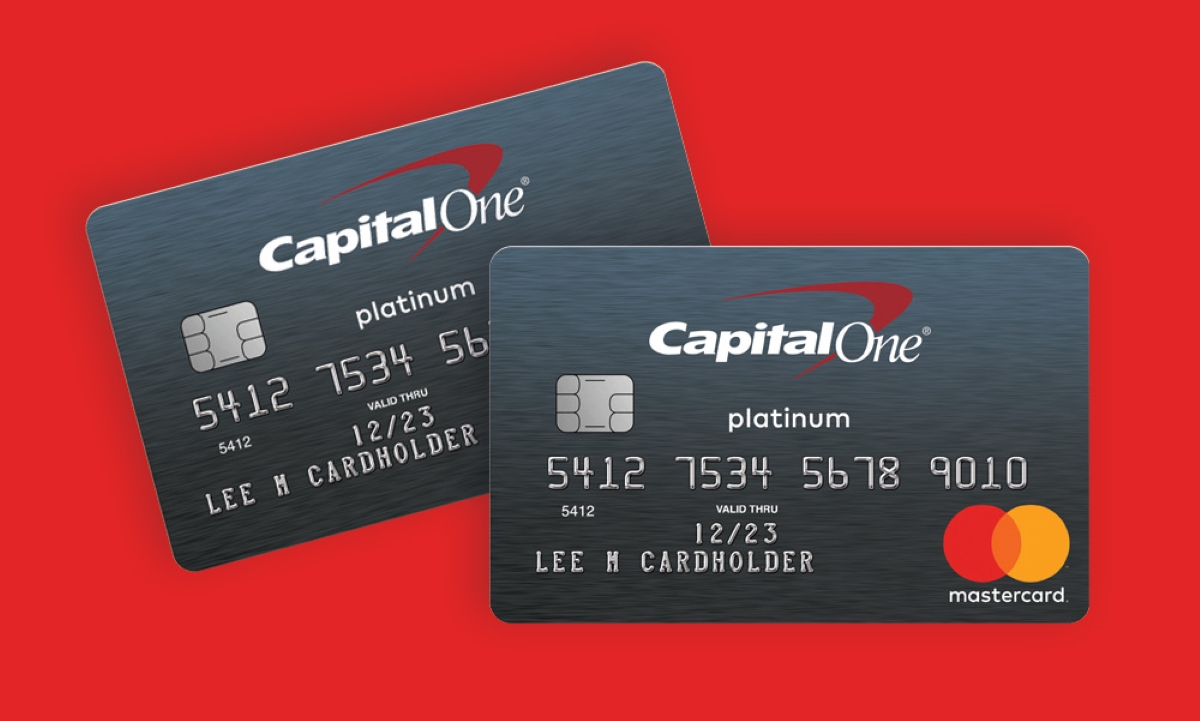

Finance
What Is The Minimum Payment On Capital One
Published: February 26, 2024
Learn about the minimum payment on Capital One and its impact on your finances. Understand how to manage your finances effectively.
(Many of the links in this article redirect to a specific reviewed product. Your purchase of these products through affiliate links helps to generate commission for LiveWell, at no extra cost. Learn more)
Table of Contents
Introduction
Understanding the Minimum Payment on Capital One Credit Cards
When it comes to managing credit card debt, it's crucial to comprehend the concept of minimum payments. In this article, we'll delve into the specifics of minimum payments on Capital One credit cards, shedding light on what they entail and why they matter. Understanding the minimum payment requirements is essential for responsible financial management and avoiding potential pitfalls associated with credit card debt.
Capital One, a prominent financial institution renowned for its credit card offerings, sets minimum payment requirements for its cardholders. These minimum payments represent the lowest amount that cardholders must pay by a specified due date to keep their accounts in good standing. Failing to meet these minimum payment obligations can result in late fees, penalty interest rates, and potential damage to one's credit score.
In the following sections, we'll explore the factors influencing minimum payments, how they are calculated, and the significance of paying more than the minimum. By gaining a comprehensive understanding of these aspects, you'll be better equipped to navigate the world of credit card payments and make informed financial decisions that align with your long-term goals. Let's embark on this insightful journey to demystify the minimum payment requirements on Capital One credit cards.
Understanding Minimum Payments
Minimum payments on Capital One credit cards represent the smallest amount that cardholders must pay each month to satisfy their financial obligations. While it may seem like a convenient way to manage credit card debt, it’s essential to recognize that making only the minimum payment can lead to long-term financial challenges.
When cardholders make only the minimum payment, they are essentially carrying forward a portion of their balance to the next billing cycle. This results in the accrual of interest on the remaining balance, potentially leading to a cycle of debt that becomes increasingly difficult to overcome. The allure of minimum payments lies in their short-term convenience, as they allow individuals to meet their immediate payment obligations without having to allocate a larger sum of money.
However, it’s crucial to acknowledge that minimum payments primarily go towards covering the interest accrued on the outstanding balance, with only a small portion contributing to reducing the principal balance. As a result, carrying a balance while making minimum payments can lead to prolonged repayment periods and higher overall interest costs.
Understanding the implications of minimum payments is pivotal for responsible credit card management. By recognizing that minimum payments primarily serve the interest of the credit card issuer, cardholders can make informed decisions regarding their repayment strategies. In the subsequent sections, we’ll explore the factors influencing minimum payments, the calculation methodology, and the significance of exceeding the minimum payment requirements.
Factors Affecting Minimum Payments
Several key factors influence the determination of minimum payments on Capital One credit cards. Understanding these variables is essential for cardholders seeking to manage their financial obligations effectively.
- Outstanding Balance: The outstanding balance on a credit card directly impacts the minimum payment amount. Typically, the minimum payment is calculated as a percentage of the total balance or a predetermined minimum amount, whichever is higher. This means that as the outstanding balance increases, so does the minimum payment requirement.
- Annual Percentage Rate (APR): The APR, which represents the annual interest rate charged on outstanding balances, significantly influences minimum payments. Higher APRs result in increased interest accrual, leading to higher minimum payment obligations.
- Fee Assessments: Additional fees, such as late payment fees or over-limit fees, can impact the minimum payment amount. When these fees are added to the outstanding balance, they contribute to a higher minimum payment requirement.
- Credit Card Terms: The specific terms and conditions outlined in the credit card agreement, including any promotional offers or special terms, can impact the minimum payment calculation. Cardholders should review their credit card terms to understand how these provisions influence their minimum payment obligations.
- Regulatory Requirements: Regulatory guidelines and consumer protection laws may also influence minimum payment calculations. Changes in regulations or industry standards can impact how minimum payments are determined and communicated to cardholders.
By considering these factors, cardholders can gain insight into the dynamics that shape their minimum payment requirements. It’s essential to stay informed about the variables that impact minimum payments to make proactive and informed decisions regarding credit card usage and repayment strategies.
How to Calculate the Minimum Payment
Calculating the minimum payment on a Capital One credit card involves understanding the specific methodology employed by the issuer to determine this essential financial obligation. While the exact calculation may vary based on the cardholder’s outstanding balance, annual percentage rate (APR), and other factors, there are common approaches used to derive the minimum payment amount.
One prevalent method for calculating the minimum payment is based on a percentage of the outstanding balance, typically ranging from 1% to 3% of the total amount owed. Additionally, a predetermined minimum payment floor may be established to ensure that the minimum payment meets a specified threshold, regardless of the percentage calculation outcome. In some cases, the minimum payment may incorporate the interest accrued during the billing cycle, along with a portion of the principal balance.
It’s important to note that credit card issuers such as Capital One may disclose the minimum payment calculation methodology in the cardholder agreement or billing statements. By reviewing these resources, cardholders can gain clarity on how their minimum payments are determined and take proactive steps to manage their financial responsibilities effectively.
Understanding the minimum payment calculation process empowers cardholders to anticipate their monthly obligations and make informed decisions regarding their repayment strategy. By being aware of the factors that contribute to the minimum payment amount, individuals can develop a comprehensive approach to managing their credit card debt and working towards financial stability.
As a responsible cardholder, it’s crucial to stay informed about the minimum payment calculation methodology and seek clarification from the credit card issuer if any aspects appear unclear. By fostering transparency and understanding in the calculation of minimum payments, cardholders can navigate their financial commitments with confidence and make strategic choices to achieve their long-term financial objectives.
Importance of Making More Than the Minimum Payment
While meeting the minimum payment requirement on a Capital One credit card is essential for maintaining good standing and avoiding penalties, making more than the minimum payment can yield significant long-term benefits for cardholders. By exceeding the minimum payment obligation, individuals can expedite debt repayment, reduce interest costs, and enhance their overall financial well-being.
One of the primary advantages of making more than the minimum payment is the acceleration of debt reduction. By allocating additional funds towards the principal balance, cardholders can reduce the outstanding debt at a faster pace, ultimately shortening the repayment period. This approach not only alleviates the financial burden associated with prolonged debt but also frees up resources for other financial goals and expenditures.
Furthermore, making more than the minimum payment enables cardholders to minimize the impact of interest accrual on their outstanding balances. Since interest is typically calculated based on the remaining debt, reducing the principal balance through larger payments can lead to lower overall interest costs over time. As a result, cardholders can save money that would have otherwise been allocated towards interest payments, contributing to improved financial resilience and stability.
Another compelling reason to make more than the minimum payment is the potential enhancement of one’s credit profile. By demonstrating a proactive approach to debt repayment and consistently exceeding the minimum payment requirements, cardholders can showcase responsible financial behavior to credit reporting agencies. This, in turn, can positively influence their credit score and enhance their eligibility for favorable credit terms and financial opportunities in the future.
Moreover, the habit of making more than the minimum payment fosters a proactive and disciplined approach to financial management. By prioritizing larger payments towards their credit card balances, individuals cultivate a mindset centered on prudent budgeting, strategic debt reduction, and long-term financial planning. This mindset can extend beyond credit card debt and permeate other aspects of personal finance, contributing to a holistic and sustainable financial outlook.
Ultimately, making more than the minimum payment on a Capital One credit card empowers cardholders to take control of their financial destiny, reduce debt burdens, and position themselves for long-term financial success. By embracing this proactive approach, individuals can leverage their financial resources effectively, mitigate the impact of debt, and pave the way for a more secure and prosperous financial future.
Conclusion
Understanding the minimum payment requirements on Capital One credit cards is pivotal for responsible financial management and debt repayment. By grasping the significance of minimum payments, the factors influencing their calculation, and the benefits of exceeding the minimum payment obligation, cardholders can navigate their credit card obligations with confidence and foresight.
It’s clear that while minimum payments serve as a fundamental requirement for maintaining good standing, making more than the minimum payment can yield substantial advantages. From expediting debt repayment and reducing interest costs to enhancing credit profiles and fostering disciplined financial habits, the impact of exceeding the minimum payment obligation extends far beyond immediate financial obligations.
As cardholders strive to manage their credit card debt effectively, it’s essential to embrace a proactive approach to debt repayment and financial planning. By staying informed about minimum payment requirements, seeking opportunities to exceed the minimum payment, and cultivating a mindset centered on prudent financial management, individuals can position themselves for long-term financial stability and success.
In essence, the journey towards financial well-being involves more than meeting minimum obligations—it encompasses a commitment to strategic debt reduction, responsible credit card usage, and the cultivation of sound financial habits. By leveraging the insights provided in this article, cardholders can embark on this journey with clarity, confidence, and a proactive mindset, ultimately shaping a brighter financial future for themselves.














